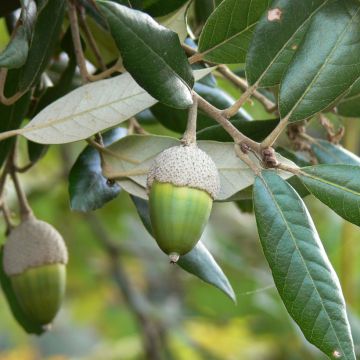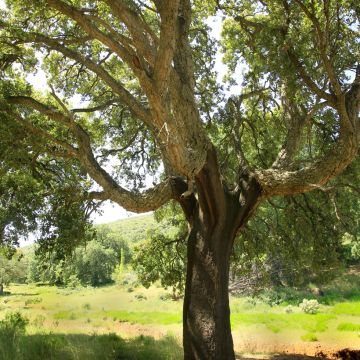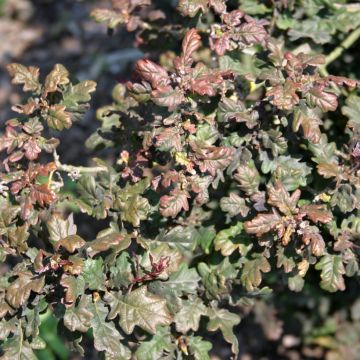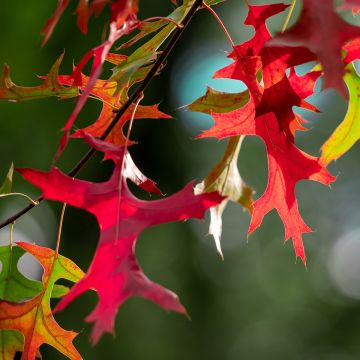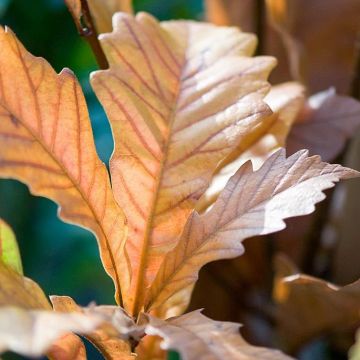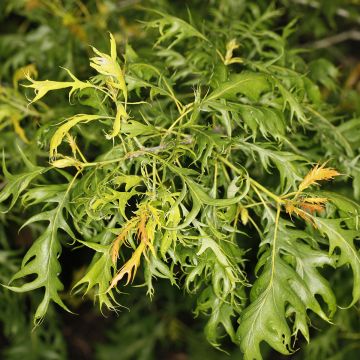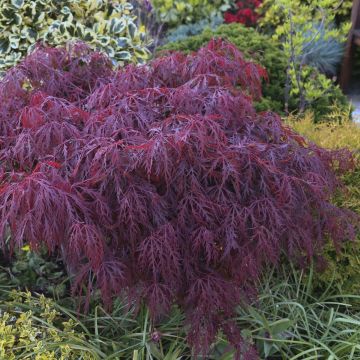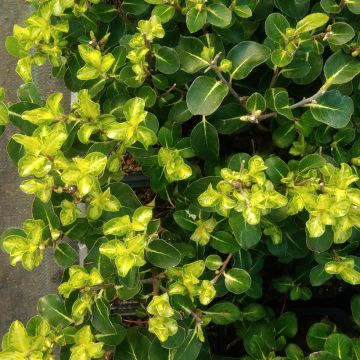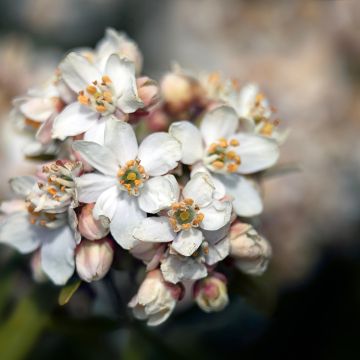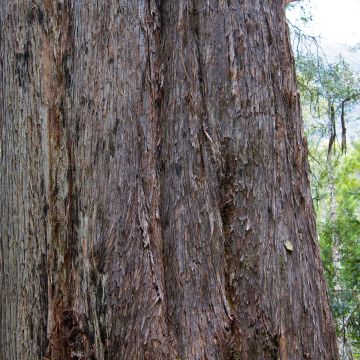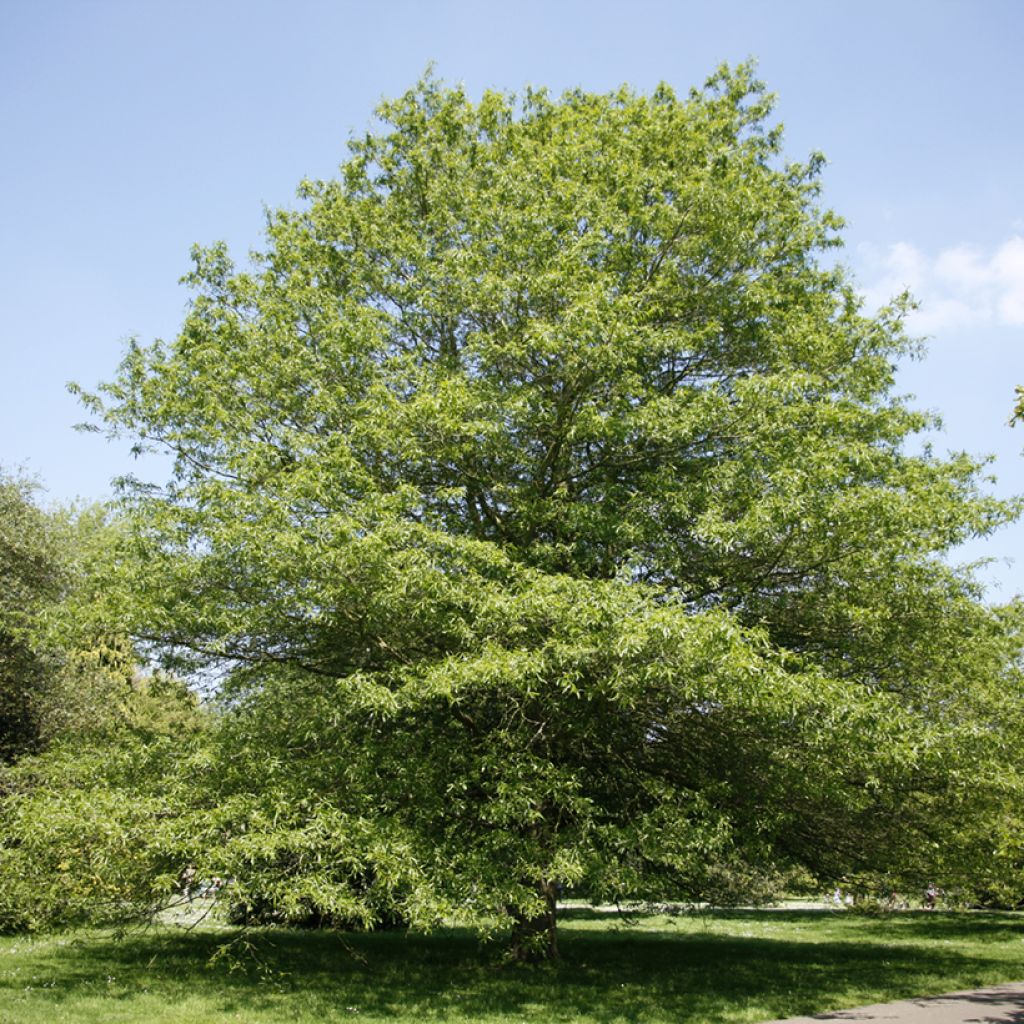

Quercus phellos - Willow Oak
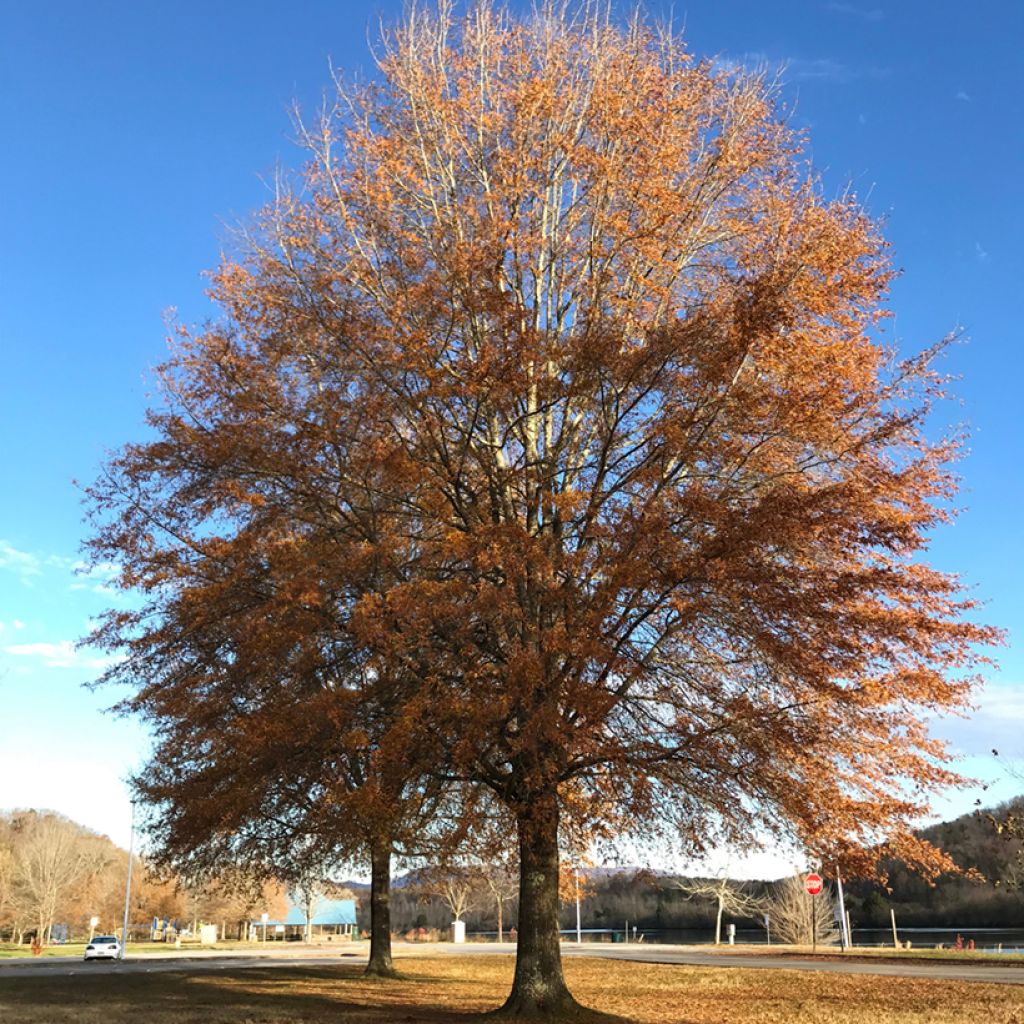

Quercus phellos - Willow Oak


Quercus phellos - Willow Oak


Quercus phellos - Willow Oak
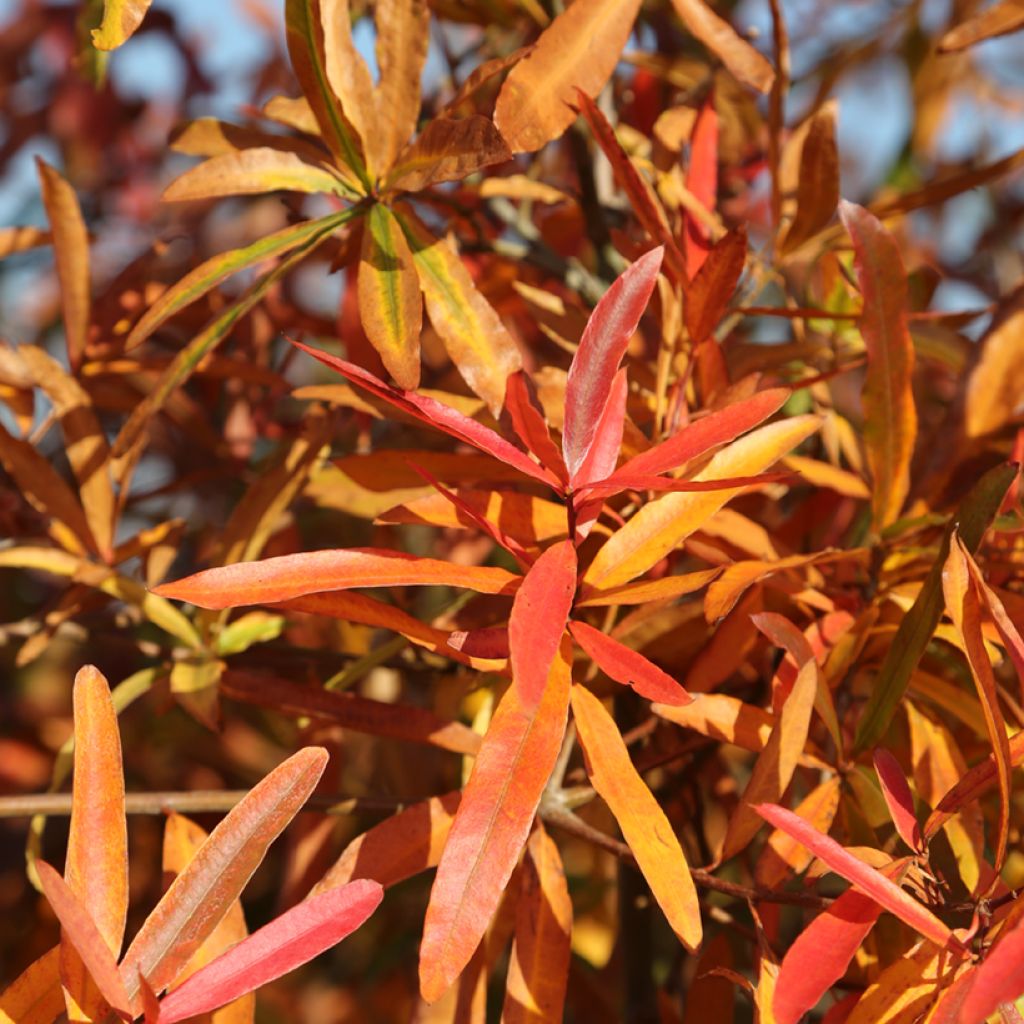

Quercus phellos - Willow Oak
Quercus phellos - Willow Oak
Quercus phellos
Willow Oak
Why not try an alternative variety in stock?
View all →This plant carries a 24 months recovery warranty
More information
We guarantee the quality of our plants for a full growing cycle, and will replace at our expense any plant that fails to recover under normal climatic and planting conditions.
From €5.90 for pickup delivery and €6.90 for home delivery
Express home delivery from €8.90.
Delivery to Corse prohibited: UE law prohibits the import of this plant from mainland France to Corse as part of the fight against Xylella fastidiosa. Please accept our sincere apologies.
More information
Does this plant fit my garden?
Set up your Plantfit profile →
Description
The Quercus phellos, or willow oak, is a species native to North America that is characterised by significant growth, an elegant ovoid habit, and especially fine-textured foliage reminiscent of a willow. Its leaves, shiny green in summer, turn yellow, or even almost orange in autumn. They may remain evergreen through mild winters. This oak with willow-like features makes a beautiful shade tree that will adapt to any non-calcareous soil.
Quercus phellos is native to the United States, where it naturally grows in coastal plains and river valleys, mainly in the southeastern part of the country. It is commonly found in wet but well-drained areas such as swamps, riverbanks, and lowland forests. It thrives in locations at the interface between dry and wet environments, alongside Acer rubrum, Fraxinus pennsylvanica, and Gleditsia triacanthos. This species was introduced to Europe in the 18th century. Like all oaks, it belongs to the Fagaceae family.
The willow oak exhibits moderately fast growth, which can vary depending on the growing conditions. In our climates, it can reach a height of 15 to 20 m and a spread of 6 to 8 m. It develops a massive trunk and a crown that is initially pyramidal, becoming ovoid, closed, and dense over time. The bark is smooth and dark grey on young trees, becoming slightly rough with age and peeling off in small plates. The young olive-green shoots have a velvety pubescence, but quickly become glabrous and greenish-brown. The leaves are finely lanceolate to sometimes linear, measuring approximately 5 to 15 cm in length and 1 to 1.5 cm in width. Their upper surface is dark green in summer, while their lower surface is glaucous. The leaf margin is entire and slightly undulate. In autumn, they turn pale yellow, yellow, or even orange, depending on the soil and climate. Golden catkins appear in May. The acorns are small, almost spherical, measuring 1 to 1.5 cm in length. At most, one-third of the acorns are surrounded by a cupule. They mature in two years.
Quercus phellos combines the graceful foliage of a willow with the imposing character of an oak. It should be planted in an open position where it will be visible from a distance. It can be cultivated as an ornamental tree in parks and large gardens, where it will express its full potential as a shade tree or specimen. Quercus phellos tolerates urban conditions and is resistant to wind, heat, drought, and occasional flooding. This species is disease-free but does not grow well in chalky soils. To accompany it, consider choosing, for example, an American sweet gum (Liquidambar styraciflua) with spectacular autumn foliage, whorled holly (Ilex verticillata 'Maryland Beauty') with beautiful red berries in autumn and winter, and a shrub like Viburnum dentatum 'Blue Muffin' with white flowers in summer and blue-black berries in autumn.
Report an error about the product description
Plant habit
Flowering
Foliage
Botanical data
Quercus
phellos
Fagaceae
Willow Oak
North America
Other Oak
Planting and care
The Quercus phellos is preferably planted in autumn in any non-limestone, deep, well-drained soil. It tolerates occasional flooding or, conversely, seasonal droughts (once well rooted). It should be planted in a sunny location. Stake the young plants and then let nature take its course. Pruning is unnecessary, except for young trees that do not grow in a balanced manner. In February, before the vegetation resumes, remove dead wood or any wood that hinders the tree's habit.
Planting period
Intended location
Care
This item has not been reviewed yet - be the first to leave a review about it.
Striking foliage shrubs
Haven't found what you were looking for?
Hardiness is the lowest winter temperature a plant can endure without suffering serious damage or even dying. However, hardiness is affected by location (a sheltered area, such as a patio), protection (winter cover) and soil type (hardiness is improved by well-drained soil).

Photo Sharing Terms & Conditions
In order to encourage gardeners to interact and share their experiences, Promesse de fleurs offers various media enabling content to be uploaded onto its Site - in particular via the ‘Photo sharing’ module.
The User agrees to refrain from:
- Posting any content that is illegal, prejudicial, insulting, racist, inciteful to hatred, revisionist, contrary to public decency, that infringes on privacy or on the privacy rights of third parties, in particular the publicity rights of persons and goods, intellectual property rights, or the right to privacy.
- Submitting content on behalf of a third party;
- Impersonate the identity of a third party and/or publish any personal information about a third party;
In general, the User undertakes to refrain from any unethical behaviour.
All Content (in particular text, comments, files, images, photos, videos, creative works, etc.), which may be subject to property or intellectual property rights, image or other private rights, shall remain the property of the User, subject to the limited rights granted by the terms of the licence granted by Promesse de fleurs as stated below. Users are at liberty to publish or not to publish such Content on the Site, notably via the ‘Photo Sharing’ facility, and accept that this Content shall be made public and freely accessible, notably on the Internet.
Users further acknowledge, undertake to have ,and guarantee that they hold all necessary rights and permissions to publish such material on the Site, in particular with regard to the legislation in force pertaining to any privacy, property, intellectual property, image, or contractual rights, or rights of any other nature. By publishing such Content on the Site, Users acknowledge accepting full liability as publishers of the Content within the meaning of the law, and grant Promesse de fleurs, free of charge, an inclusive, worldwide licence for the said Content for the entire duration of its publication, including all reproduction, representation, up/downloading, displaying, performing, transmission, and storage rights.
Users also grant permission for their name to be linked to the Content and accept that this link may not always be made available.
By engaging in posting material, Users consent to their Content becoming automatically accessible on the Internet, in particular on other sites and/or blogs and/or web pages of the Promesse de fleurs site, including in particular social pages and the Promesse de fleurs catalogue.
Users may secure the removal of entrusted content free of charge by issuing a simple request via our contact form.
The flowering period indicated on our website applies to countries and regions located in USDA zone 8 (France, the United Kingdom, Ireland, the Netherlands, etc.)
It will vary according to where you live:
- In zones 9 to 10 (Italy, Spain, Greece, etc.), flowering will occur about 2 to 4 weeks earlier.
- In zones 6 to 7 (Germany, Poland, Slovenia, and lower mountainous regions), flowering will be delayed by 2 to 3 weeks.
- In zone 5 (Central Europe, Scandinavia), blooming will be delayed by 3 to 5 weeks.
In temperate climates, pruning of spring-flowering shrubs (forsythia, spireas, etc.) should be done just after flowering.
Pruning of summer-flowering shrubs (Indian Lilac, Perovskia, etc.) can be done in winter or spring.
In cold regions as well as with frost-sensitive plants, avoid pruning too early when severe frosts may still occur.
The planting period indicated on our website applies to countries and regions located in USDA zone 8 (France, United Kingdom, Ireland, Netherlands).
It will vary according to where you live:
- In Mediterranean zones (Marseille, Madrid, Milan, etc.), autumn and winter are the best planting periods.
- In continental zones (Strasbourg, Munich, Vienna, etc.), delay planting by 2 to 3 weeks in spring and bring it forward by 2 to 4 weeks in autumn.
- In mountainous regions (the Alps, Pyrenees, Carpathians, etc.), it is best to plant in late spring (May-June) or late summer (August-September).
The harvesting period indicated on our website applies to countries and regions in USDA zone 8 (France, England, Ireland, the Netherlands).
In colder areas (Scandinavia, Poland, Austria...) fruit and vegetable harvests are likely to be delayed by 3-4 weeks.
In warmer areas (Italy, Spain, Greece, etc.), harvesting will probably take place earlier, depending on weather conditions.
The sowing periods indicated on our website apply to countries and regions within USDA Zone 8 (France, UK, Ireland, Netherlands).
In colder areas (Scandinavia, Poland, Austria...), delay any outdoor sowing by 3-4 weeks, or sow under glass.
In warmer climes (Italy, Spain, Greece, etc.), bring outdoor sowing forward by a few weeks.


































